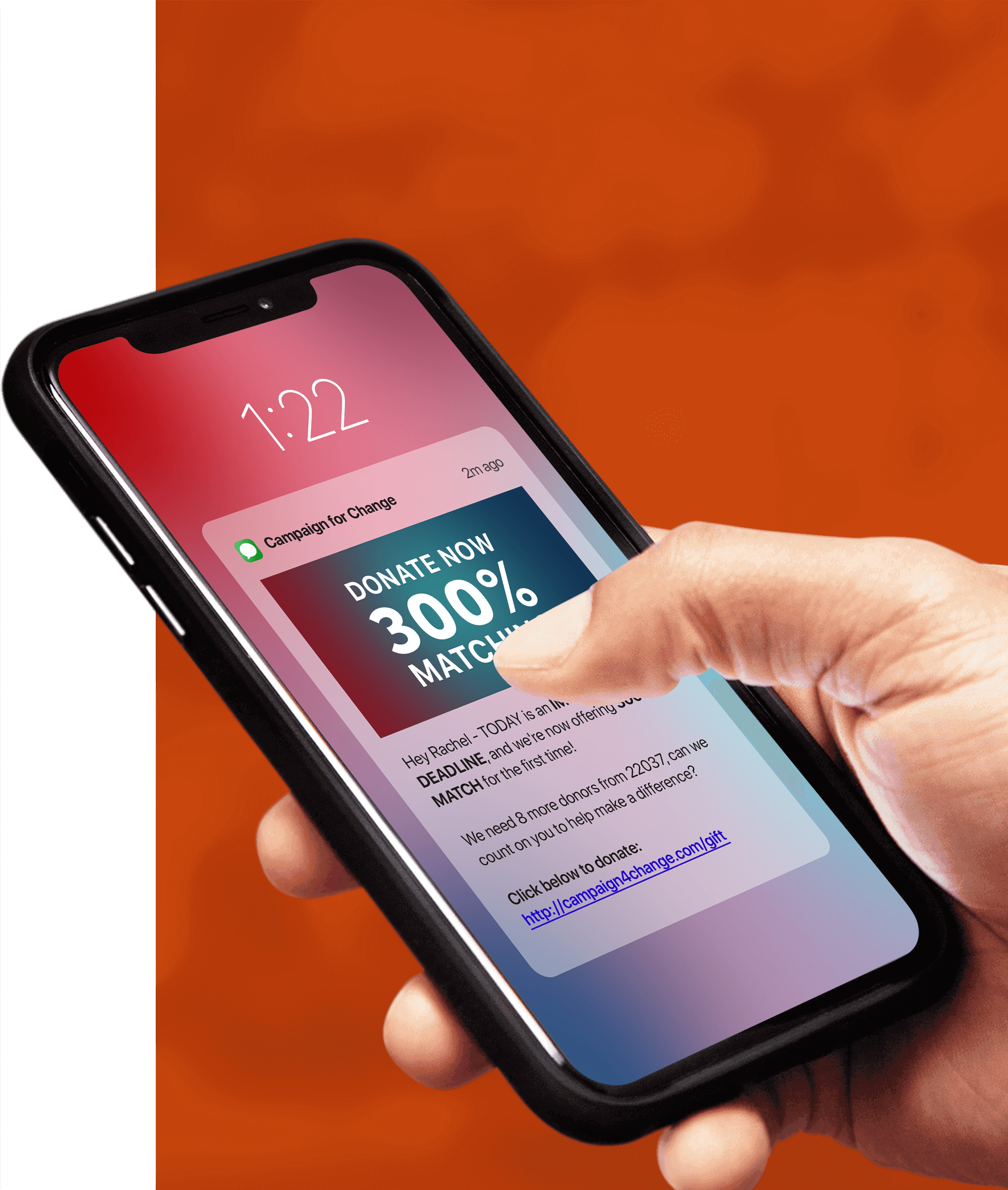Standing out is crucial in the competitive world of nonprofit marketing, where various organizations are looking for support to help them make a difference. So what does this mean for your nonprofit organization?
Text message marketing continues to be a vital tool for nonprofits looking to deepen connections with their audiences while amplifying their messages. Keep reaching out to learn how nonprofits can use text message marketing to maximize impact and ensure their voices are heard in the bustling digital realm.
The Influence of Text Message Marketing
What would you do to ensure an almost-perfect open rate? Text message marketing provides both a personal and direct way to better communicate with supporters. With a 98% open rate, text messages can assure that the messages you work to put out are delivered—and read. This immediate visibility makes texting an influential tool for nonprofits to increase engagement, raise awareness, and drive action. Here are 11 steps to best implement texting into your marketing strategy:
1. Start with a Solid Strategy
The keystone of impactful text message marketing is an intentional strategy. As with any effective strategy, it’s important to start by defining clear, measurable, and timely objectives. Once these objectives are defined, identify your target audience and tailor your messages to resonate with them. A focused strategy helps to ensure that your efforts are aligned with your organization’s goals and audience’s interests.
2. Let Your Contacts Opt-In
Next, create an opt-in list of contacts, allowing your contacts to comply to text messages. This can be done through your website, social media channels, or during events by inviting people to subscribe to your text updates. Remember, consent is a must – it’s not just ethical but a legal necessity under regulations like TCPA (Telephone Consumer Protection Act).
3. Keep it Short and Sweet
Text message marketing success relies on captivating and concise content. This content needs to include a strong call-to-action (CTA). What do you want your audience to do? Whether it’s to donate, volunteer, or attend an event, help your audience know what their next step is and invite them to do so. Also, personalized texts have a higher engagement rate, so you can increase your likelihood of involvement by making your messages unique to the reader.
4. Utilize SMS for Fundraising Campaigns
Fundraising is a crucial aspect of nonprofit operations, and SMS can significantly enhance your fundraising efforts. Launch text-to-donate campaigns, making it easy for supporters to contribute with just a few taps on their phones. Share stories and impacts of donations through texts to build a connection and encourage recurring contributions.
5. Enhance Event Management
Use text messages to streamline event management through sending updates, reminders, and post-event thank you messages. During events, you can also use texting to engage attendees with live polls or Q&A sessions. Using SMS resources not only improves the event experience but also fosters a sense of community among your supporters.
6. Integrate with Other Marketing Channels
For maximum impact, integrate text message marketing with other channels like email, social media, and direct mail. For instance, use emails for detailed storytelling and texts for timely reminders or calls to action. This multichannel approach ensures a cohesive and comprehensive reach to your audience.
7. Segment Your Audience
To personalize your communication, it’s important to consider how to better understand and reach your audience, such as through audience segmentation. Segment your contacts based on interests, past donations, or engagement levels. These personalized messages stick with your audience and create more organic, long-lasting engagement and conversion rates.
8. Leverage Automation and Analytics
Use those automation tools! Take advantage of resources to help schedule messages and set up auto-responses. Doing so not only saves time, but it also ensures timely and consistent communication. You can also utilize analytics to track the effectiveness of your campaigns by looking at metrics including open rates, click-through rates, and conversion rates.
9. Encourage Two-Way Communication
Make your SMS marketing interactive by encouraging two-way communication. Invite feedback, conduct surveys, or have Q&A sessions via text. This not only provides valuable insights but also makes your supporters feel heard and valued.
10. Focus on Storytelling
Nonprofits have powerful stories to tell, so remember to be a storyteller. Use SMS and texting to share impactful experiences, updates, and testimonials from those you’ve helped. You can also help your audience feel more connected to your cause. Storytelling can create emotional connections and motivate your supporters to take action.
11. Stay Consistent but Not Overbearing
Consistency is key to keeping your audience engaged, but it’s important not to overwhelm them. Find the right balance in your messaging frequency and with what works for your unique audience. Reach out enough to keep your audience informed and engaged, but not so much that it becomes intrusive and, frankly, annoying.
Navigating Challenges in SMS Marketing
While SMS marketing is effective, it comes with challenges such as message limitations, such as character limitations, and maintaining engagement over time. Overcoming these involves creative content strategies and intentionally evolving your approach based on your feedback and results.
Conclusion
Text message marketing presents a unique opportunity for nonprofits to connect with their audience in a direct and more personal way. By implementing a strategy, engaging content, and the strengths of SMS, nonprofits can enhance both their outreach and impact. As we move further into the digital age, embracing and mastering text message marketing will be key for nonprofits to grow.

